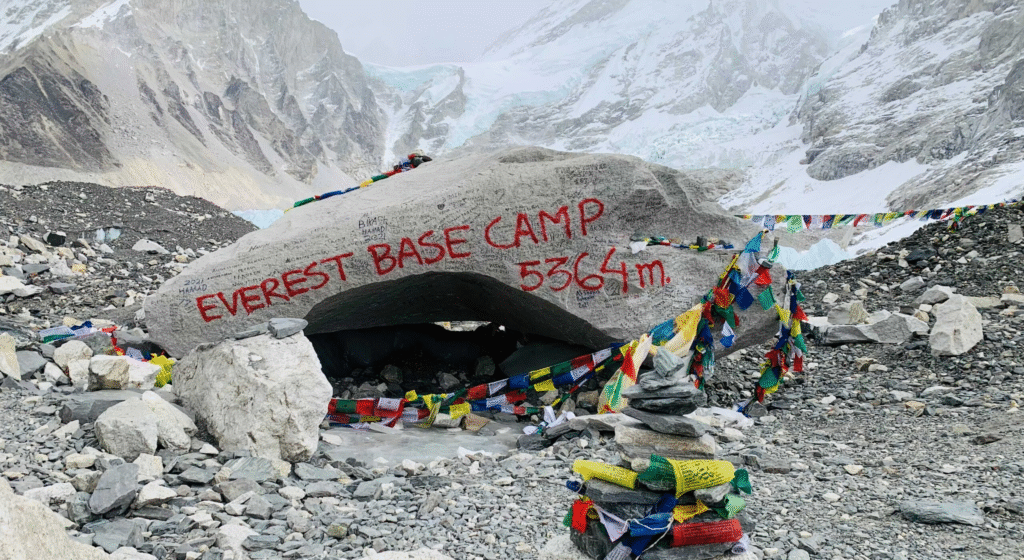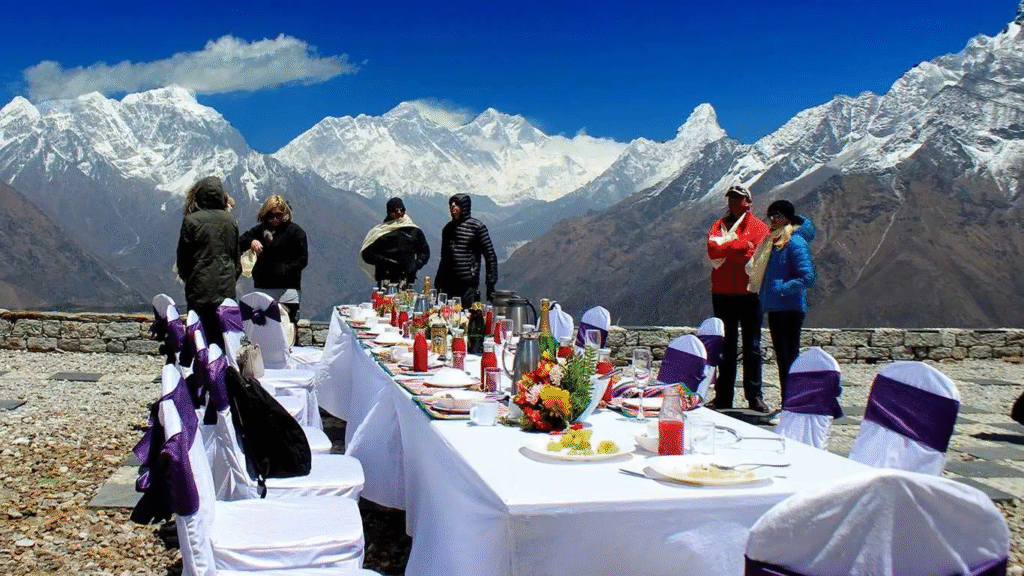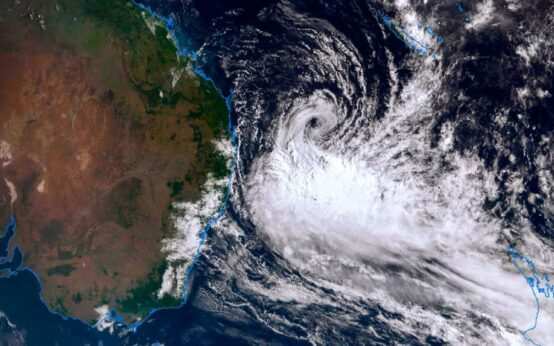Can Everest Base Camp Be Moved?
Mount Everest‘s Base Camp has been the starting point for countless dreams and adventures. But today, this famous camping spot faces a serious problem that’s forcing Nepal to ask a tough question: Should we move it?

The Simple Answer: Yes, It Can Be Moved
Everest Base Camp can definitely be moved – Nepal has the power to do it. The real question isn’t whether it’s possible, but whether it’s the right thing to do.
Why Moving Base Camp Is Even Being Discussed
The current Base Camp sits on the Khumbu Glacier, and this glacier is melting fast. Think of it like trying to set up camp on a slowly sinking ship. Here’s what’s happening:
Global warming is causing the glacier to thin and melt. Where there used to be solid ice, there are now dangerous cracks and pools of water. Local Sherpas say the changes are dramatic – ice formations that used to be landmarks have completely melted away.
Too Many People, Too Much Impact
This spring alone, 468 climbers from 47 different teams got permits to climb Everest. Add their guides, porters, and support staff, and you have about 2,000 people tramping around Base Camp. All these people bring:Heaters and gas stoves, Waste and garbage, Helicopters flying in and out, General wear and tear on the fragile environment.

Government officials who recently visited Base Camp came back with a clear message: “This can’t continue.” The combination of melting ice and human activity is making the area unstable and risky.
Where Would It Go?
Nepal is considering moving Base Camp about 200-400 meters lower, to a spot that’s not on the glacier. This would put it on more stable ground that won’t shift and crack like ice does.
About 95% of the people who actually work at Everest – the Sherpas, guides, and expedition operators – are against moving Base Camp.
The current location is perfect for early morning crossings of the dangerous Khumbu Icefall (a treacherous section of moving ice). Moving Base Camp would mess up this carefully planned timing.
A lower Base Camp would mean longer, more difficult climbs. Instead of making things easier, it might just add another stop to an already challenging journey.
For the Sherpa community, the current Base Camp location is tied to their economy and way of life. Changing it isn’t just about moving tents – it’s about disrupting an entire system that works.
What’s Likely to Happen?
In the Short Term Base Camp will probably stay where it is for the next few years. The opposition is too strong, and more studies are needed.
In the Long Term If the glacier keeps melting and conditions become truly dangerous, Base Camp will eventually have to move. But this will only happen when everyone agrees it’s absolutely necessary.
The Bigger Picture
This isn’t just about one campsite. It’s a perfect example of how climate change is forcing us to rethink things we’ve taken for granted. Even the world’s most famous mountain isn’t immune to the effects of global warming.
The Everest Base Camp debate shows us something important: sometimes the “obvious” solution (just move it!) isn’t so simple when real people’s lives and livelihoods are involved. Nepal is trying to balance environmental protection, safety, and the needs of local communities and that’s never easy.
For now, climbers heading to Everest will still set up camp on that slowly melting glacier. But change is coming, whether we’re ready for it or not. The question isn’t if Base Camp will eventually move, but when – and whether we’ll have a plan that works for everyone when that time comes.
As one government official put it
“There’s competition for luxury and five-star hotel facilities rather than just mountaineering achievements.”
Perhaps the real question isn’t just where to put Base Camp, but how to return Everest to being about the mountain, not the amenities.


 World’s major courts take growing role in climate fight
World’s major courts take growing role in climate fight  Can I Do the Everest Base Camp Trek Without a Guide?
Can I Do the Everest Base Camp Trek Without a Guide?  Underreported Climate Migration Surges in South Asia
Underreported Climate Migration Surges in South Asia  Why is Brazil Cutting Amazon Forest?
Why is Brazil Cutting Amazon Forest?  Wildfires devastate southern South Korea, claiming at least 24 lives
Wildfires devastate southern South Korea, claiming at least 24 lives  Alfred Cyclone: Australian Government told to prepare for worst
Alfred Cyclone: Australian Government told to prepare for worst